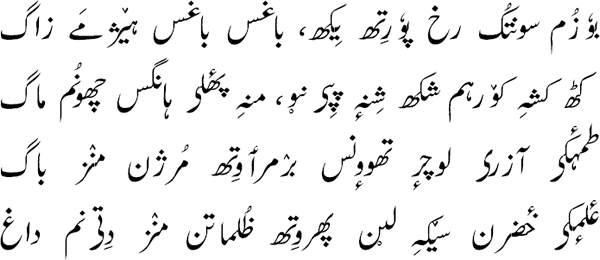The Erosion of Cultural Identity
Sayima Akhtar, Younus M Bhatt ✉
The renowned linguist, Joshua Fishman, once said, “Language is not just a tool for communication, but a symbol of identity, culture, and community.”

Once a language is lost, the culture and civilization associated with it are also lost forever. Language is the soul of a culture, the vessel through which traditions, values, and history are carried forward. When a language dies, it is not merely words that are lost, but an entire worldview, a distinct way of thinking and understanding the world.
The Kashmiri language, once the heartbeat of the Valley, is now on the brink of extinction, slowly being replaced by English, Hindi, and Urdu. What makes this decline even more tragic is that it is not merely an external force eroding the language, but a self-imposed rejection by its speakers.
Kashmiris have gone English-crazy! Even when talking to fellow Kashmiris, they insist on speaking in English. It’s like they’re trying to win a prize for “Most Likely to Sound Sophisticated”!
Take the VC’s, educators, directors, professionals, and students, for instance. They struggle to string together a sentence in English, but hey, who needs fluency when you can sound elite, right? And don’t even get me started on the interviewers and interviewees who use more fillers like- “you know” and “you see” than actual words!
But here’s the good news: Kashmiri isn’t alone in this struggle. Languages around the world have faced similar threats. Some have bitten the dust, while others have made epic comebacks. So, will Kashmiri be the hero that saves the day, or will it fade away into obscurity? The choice is ours!
A Global Pattern
The erosion of indigenous languages is not new. Colonialism and forced assimilation nearly wiped out Native American languages and Celtic languages like Scottish Gaelic, Welsh, and Irish.
A stark example is Japan’s Ainu language. Systematic assimilation forced the Ainu people to abandon their language and traditions, rendering Ainu extinct with no native speakers left.

Irish, too, faced a similar fate due to British colonization. However Irish nationalists led a movement to reclaim their linguistic heritage in the 1950s and 1960s. Initiatives like Gaelscoileanna (Irish-language schools) and government policies helped revive the Irish as a cultural force.
This success story proves that a dying language can be brought back to life with commitment.
Hebrew is a remarkable example of language revival, brought back to life in the late 19th century by dedicated individuals, notably Eliezer Ben-Yehuda. His efforts were nothing short of remarkable. He began by adapting ancient Hebrew vocabulary for modern usage, creating new words and phrases to describe contemporary concepts and ideas. He also established the Hebrew Language Committee, which later became the Academy of the Hebrew Language, to standardize and regulate the language.
Ben-Yehuda believed Hebrew’s revival was crucial for the Jewish people’s rebirth and the establishment of a Jewish state, seeing it as a symbol of Jewish identity and culture that could unite Jews worldwide. Today, Hebrew is a thriving language spoken by millions, official in Israel, and used in all aspects of Israeli life, demonstrating language’s power to shape identity and culture, and inspiring language revitalization efforts globally.
The story of Hebrew’s revival also highlights the importance of individual initiative and dedication in language preservation efforts. Ben-Yehuda’s tireless work and passion for Hebrew helped to bring the language back from the brink of extinction, and his legacy continues to inspire language advocates and scholars today.
Don’t Let It Die!
The decline of Kashmiri is not due to oppression or colonial rule but rather a self-imposed abandonment. The primary argument against learning Kashmiri is the perceived lack of job opportunities. Many believe that proficiency in English guarantees success, while Kashmiri offers no economic advantages. But this is a flawed assumption. Job markets adapt to the educational landscape — if Kashmiri were made a compulsory medium of instruction, industries would naturally align to accommodate it.

Studies have shown that education in one’s mother tongue enhances cognitive skills, improves academic performance, and increases access to knowledge. By pushing Kashmiri out of schools and universities, we are not just killing a language — we are actively disadvantaging our youth.
Furthermore, the social stigma attached to speaking Kashmiri is baffling and more of an inferiority complex. In regions like Ladakh, local languages are celebrated and promoted, yet in Kashmir, speaking Kashmiri is sometimes seen as uncivilized or regressive. The irony is glaring — highly educated Kashmiris feel ashamed of their language, while less educated or a class highly educated proudly create content in Kashmiri, preserving the very culture that the elites are abandoning. These content creators, several creating cringe content have done more to protect Kashmiri identity than many intellectuals and policymakers combined.
Efforts needed
To ensure the survival of Kashmiri, government intervention is essential. The most effective approach is to make Kashmiri a mandatory subject in schools and universities. Every student should be required to take at least one paper in Kashmiri until the university level. This would not only strengthen linguistic identity but also produce a new generation of Kashmiri scholars, writers, and educators.

Educational institutions, Cultural academies, content creators and other civil organizations must also promote Kashmiri literature, culture, music, and arts. Kashmiri heritage should be integrated into educational curricula and celebrated, not sidelined. Religious institutions should play a role as well — sermons and Islamic discourse should incorporate Kashmiri alongside Arabic and Urdu, making religious teachings more accessible to the masses. Another critical step is regulating religious scholarship. Imams and Maulanas have historically played a key role in preserving cultural and religious values.
Clock is Ticking
When we look at the stories of the Ainu, Irish, and Hebrew languages, we see two paths: one leads to extinction, the other to revival. The question is, which path will we take for Kashmiri?

To achieve this, the government must make efforts to incentivize and promote the use of Kashmiri. One possible step is to make it compulsory for students to study at least one paper in Kashmiri up to the university level. This will not only help preserve the language but also create a new generation of scholars and leaders who are well-versed in Kashmiri. Translate mainstream books into Kashmiri, teach and preach in Kashmiri.
Furthermore, the government must also take steps to preserve Kashmiri culture. Currently, Kashmiri culture is often seen as regressive or digressive and is not encouraged in educational institutions. This is in stark contrast to other regions, such as Ladakh, where the local culture is proudly celebrated. The government must take steps to promote Kashmiri culture, including its music, art, and literature.
Final words
If we fail to preserve our language and culture, we risk losing our very identity. Therefore, we must take immediate action to preserve the Kashmiri language and culture. We owe it to ourselves, our children, and future generations to ensure that our cultural heritage is preserved and promoted. The government, educational institutions, and civil society must work together to achieve this goal. Only then can we truly say that we have preserved our cultural identity and ensured a bright future for generations to come?
If we do not act now, the next generation of Kashmiris will look back at us not as preservers of their heritage, but as the generation that let it slip away. Will we be the guardians of our culture, or will we be the reason it fades into history?





